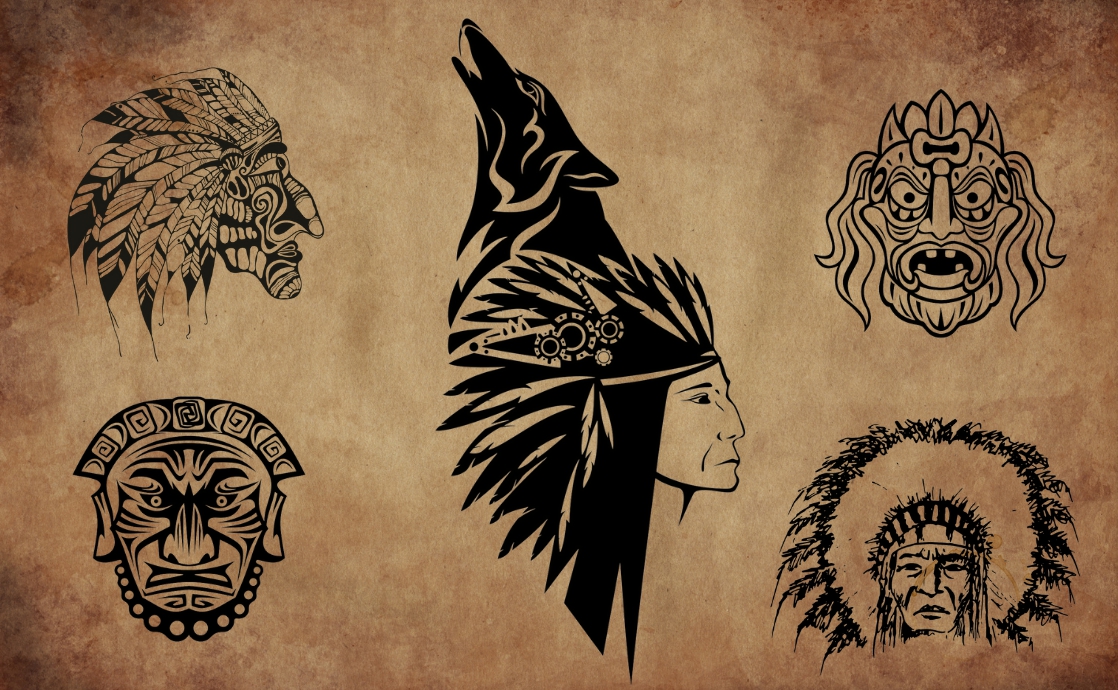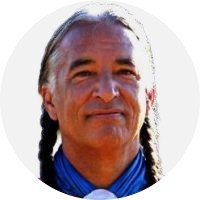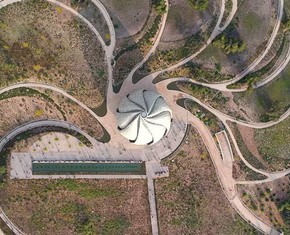The views expressed in our content reflect individual perspectives and do not represent the authoritative views of the Baha'i Faith.
Indigenous sacred narratives contain four types of figures, according to an influential article written by the Canadian First Nations legal scholar John Burrows – heroes, tricksters, monsters, and caretakers.
In this installment of our series on Indigenous holy messengers, we delve a little further into those four categories and explore their meanings.
RELATED: The Indigenous Teacher/Trickster Paradox
Q: Kevin, what do you make of Burrows’ typology? Does it make sense to you, in light of your Lakota heritage and your connection to other Indigenous spiritual traditions?
A: I’m not sure about “caretakers” – that’s a new concept for me, although I’m sure all of the Creator’s holy messengers could fit into that broad category. After all, they do appear with the primary goal of taking care of humanity.
But in my comparative study of Indigenous sacred traditions, I see “heroes,” “tricksters,” and “monsters” almost everywhere! (I’m overstating this, of course, to make my point.) I have also seen a whole lot of talking animals and transformers as well. So these appear to be the primary “dramatis personae” of these sacred narratives, which feature some universal archetypes and patterns.
So if I’m correct about this, we may want to adopt or adapt this typology, as it offers a useful clarity for reading and understanding Indigenous sacred narratives.
Q: The term, “heroes,” that John Burrows uses, is analogous to the term, “culture heroes” (that Vinson Brown, in Voices of Earth and Sky, has used) although your mother, Patricia Locke, disliked that term as being anthropological, Western, and somewhat colonizing. So the Indigenous messengers of God easily fall into John Burrows’ category of “heroes.”
Some confusion arises, however, when these same Indigenous messengers of God are also portrayed, in some (probably older) traditions, as “tricksters.” That is certainly not the case in Lakota sacred traditions. So this may be an opportunity for you to point out this distinction. Also, in our series I don’t think we’ve talked about “monsters” yet, even though they appear in many Indigenous creation narratives, as you know. “Tricksters” appear to be somewhere in between “heroes” and “monsters,” using Burrows’ typology.
So, starting with your own background, does Burrows’ fourfold typology work to describe the Lakota tradition? And, if it does, then please comment further on what I see as the “conflation” of “heroes” and “tricksters” in other Indigenous sacred traditions, with such figures as Wesakechak, Nanabush, Gluskap, and others. How do these Indigenous figures, in each category, transform the world?
A: A few years ago, there was a conflation of these four elements during the dramatic water protection movement here at Standing Rock. Corporate/government interests determined that instead of drilling an oil pipeline crossing under the Missouri River above the opulent mansions in Bismarck, the pipeline crossing should be on the border of the Standing Rock reservation. A vision or narrative of battling a “black snake” emerged as the most poignant symbol of this struggle. Nearly everyone identifies the pipeline itself as the “black snake.”
Some few Lakota recall a prophecy concerning the “uŋktéȟila” – huge monsters that ruled the land, water and skies with scales, fangs, claws and earth-shaking movements – eventually vanquished through a heaven-born force or power. Sounds like the rise and demise of the age of dinosaurs.
The Dakotas, Wyoming and Montana are home to some to the richest dinosaur fossil remains on the planet, and paleontologists were led to those findings by Indigenous informants. Naturally over the course of thousands of years narratives developed around these fossils. One of them hints at the recrudescence of these monsters – a day when they would rise again and do battle to regain control of the planet. Some may picture scenes from the epic “Jurassic Park” movies.
Another possible interpretation may be the fact that the current world-consuming material civilization is driven and propelled by the flora and fauna from the age of dinosaurs: petroleum products. In this case the monsters are born from materialism. Lust, greed, avarice, power, and delusion ride on the back of fossil fuels. These monsters are like an all-consuming fire.
This is why elders at Standing Rock constantly warned against responding to corporate force and violence with anything but prayer and non-violent resistance. Anything else would be like throwing gasoline on a fire. Again, according to some versions of the ancient narrative, the only thing that can counteract this recrudescence is a heavenly force sent by Wakȟáŋ Tȟáŋka, the Lakota name for the Most Great Spirit.
We can clearly see the forces of disintegration envelop and surround the globe, and now we must all strategically align ourselves with the forces of integration released through the revelation of Baha’u’llah. Shoghi Effendi, the Guardian of the Baha’i Faith, described those two forces in his book The Advent of Divine Justice:
Such simultaneous processes of rise and of fall, of integration and of disintegration, of order and chaos, with their continuous and reciprocal reactions on each other, are but aspects of a greater Plan, one and indivisible, whose Source is God, whose author is Baha’u’llah, the theater of whose operations is the entire planet, and whose ultimate objectives are the unity of the human race and the peace of all mankind.
Q: Kevin, that is a great contemporary example of a modern-day “monster”! Here’s how John Burrows defined each of the four categories, including “monsters”:
- Heroes are figures who brought us to the place we are. In applying these precedents, we can ask: how do we draw reasoning and standards for judgment from their activities?
- Tricksters are figures who turn the established order of life on its head to confirm, change, or transform generally accepted norms. In analogizing from their behaviours to our own, we can likewise ask: how do we draw reasoning and standards for judgment from their experiences?
- Monsters are figures of destruction and dissolution. There is value in considering: how do we draw reasoning and standards for judgment from their lessons?
- Caretakers are figures who encourage, mend, heal, reconcile, and make whole. As with the other figures, when considering their actions, we can ask: how do we draw reasoning and standards for judgment from their actions?
RELATED: How the Australian Aboriginal Divine Messengers Appeared
Can you briefly give one example from Lakota tradition for each of these four categories, and comment as well, in light of Burrows’ statement above?
A: White Buffalo Calf Woman is the heroic figure who summoned the Lakota, Dakota, and Nakota peoples from a degraded, downtrodden condition to a noble spiritual civilization and culture through the ethical code and standards she revealed.
In some purification or Inipi (Lakota term for sweat lodge, meaning “to live again”) devotional practices, a woman opens the door of the pitch-dark purification lodge for each of the four devotional sessions, thus symbolizing the holy woman Who inaugurated each developmental cycle. The previous three women were: Tȟuŋkáŋ Wakȟáŋ Wiŋ – Holy Stone Woman, Wanáȟča Wašté Wiŋ – Beautiful Flower Woman, and Ptehíŋčala Ska Wiŋ – White Buffalo Calf Woman, thus representing the mineral, plant and animal kingdoms respectively. The fourth door is also symbolically opened by a woman, apparently to represent the age of man – to also be ushered in by a woman.
When I first read an account of the Maid of Heaven intimating his revelation to Baha’u’llah in the Siyah-Chal (the “Black Pit,” as the dungeon was known in Tehran, Persia, in the 19th century), I instantly linked this with the promise of the fourth holy woman. This is not common knowledge and, in fact, I’m maybe the only person on the planet who holds this view. It just makes sense to my way of thinking.
Trickster figures are universal, and are very well-developed throughout North America. For the Lakota, Iktomi, the Spider, is the sly, cunning figure who weaves webs of deceit and trickery to entangle his unwary victims. In the end, however, he always ensnares himself and becomes the ultimate victim. He is the most popular figure in the narratives reserved for winter-telling. His antics are most amusing and entertaining and held out as the perfect example of how not to be — for he is the embodiment of the insistent self, the appetitive lower nature, the ego that, if left unguarded and unrefined, always destroys the higher self. These stories are told so that people can be wary of how not to act, and are also told as a sign of the future time when heavenly laws will be renewed because the generality of the population – and especially the leaders – will be acting like Iktomi.
Besides the previously mentioned uŋktéȟila, the most well known monster is Íya – the Devourer. He is a mythical monster that consumes entire populations in his ravenous, destructive rampages. Even though he is a prominent mythical figure in winter narratives, Íya can be said to represent pestilential afflictions such as starvation, drought, flood, war, etc. Íya is a warning for all to remain in a state of balance. Interestingly, perhaps so he can have unrestricted access to deceiving everyone, Iktomi has a major hand in vanquishing Íya.
Since North America has always been a matrilineal universe, I would have to say that females, in general, represent the “caretaker” figure mentioned by Burrows. We abide upon Uŋčí Makȟá – Grandmother Earth. The home and village are also symbolized by a woman. We all derive our birthright, clan and identity from the woman. So she must be the archetypal caregiver figure.

















Comments
Sign in or create an account
Continue with Googleor